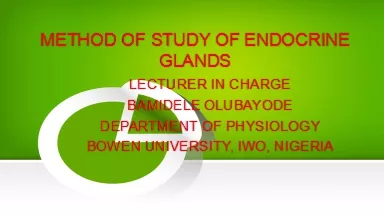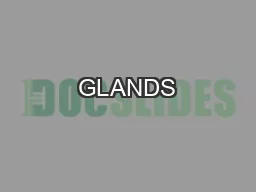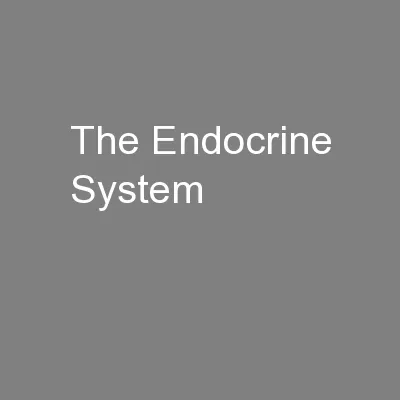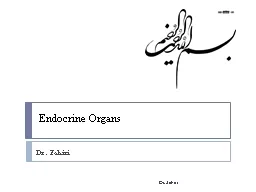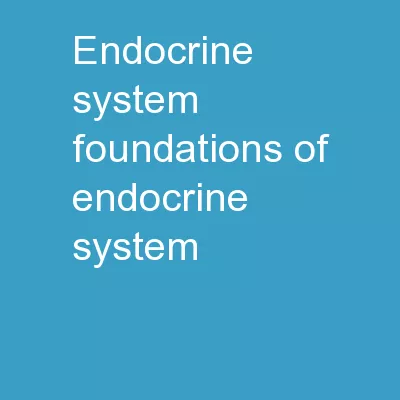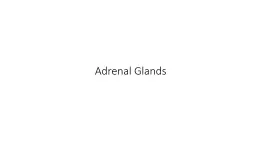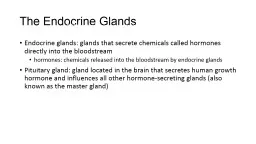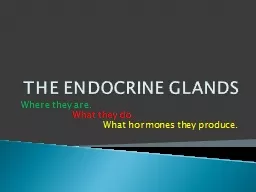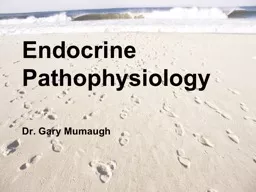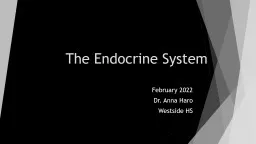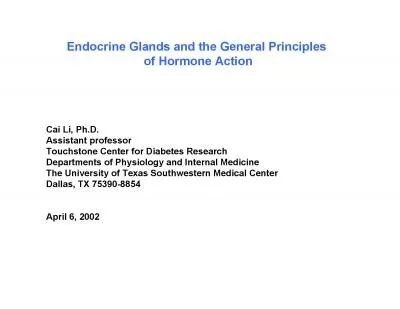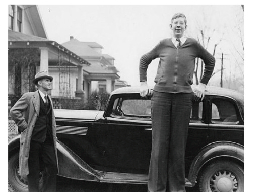PPT-METHOD OF STUDY OF ENDOCRINE GLANDS
Author : Ruggedheart | Published Date : 2022-08-02
LECTURER IN CHARGE BAMIDELE OLUBAYODE DEPARTMENT OF PHYSIOLOGY BOWEN UNIVERSITY IWO NIGERIA INTRODUCTION The study of endocrine glands is essential in the field
Presentation Embed Code
Download Presentation
Download Presentation The PPT/PDF document "METHOD OF STUDY OF ENDOCRINE GLANDS" is the property of its rightful owner. Permission is granted to download and print the materials on this website for personal, non-commercial use only, and to display it on your personal computer provided you do not modify the materials and that you retain all copyright notices contained in the materials. By downloading content from our website, you accept the terms of this agreement.
METHOD OF STUDY OF ENDOCRINE GLANDS: Transcript
LECTURER IN CHARGE BAMIDELE OLUBAYODE DEPARTMENT OF PHYSIOLOGY BOWEN UNIVERSITY IWO NIGERIA INTRODUCTION The study of endocrine glands is essential in the field of endocrine Physiology It gives information on how endocrine organs function . Name: . . Class: . . Date: . . (Islets of Langerhans not included.) . . . Write Name of Gland. Produces Melatonin. Gonadotropins FSH/LH. Growth Hormone. Located below larynx, encircling trachea. Dr. . Safaa. . Glandular Epithelium. A gland is one or more cells that makes and secretes an aqueous fluid. Both endocrine and exocrine glands . are . developmentally derived . from . epithelia, . What is the Endocrine System?. The endocrine system is the collection of glands, all of which secrete different types of hormones that control metabolism, growth and development, tissue function, sexual function, reproduction, sleep and mood, along other things.. Dr. . Zahiri. Dr. Zahiri. The endocrine system includes a number of different cells, structures, and organs which are not necessarily related at the gross anatomical level. . 1. . Histologically the endocrine system includes all structures and organs that have endocrine secretory cells as the parenchymal tissue. . Mary, Larry, and Melinda . Anatomy of The Skeletal system . -“Skeleton . can be defined as the hard framework of human body around which the entire body is built. Almost all the hard parts of human body are components of human skeletal system. Joints are very important because they make the hard and rigid skeleton allow different types of movements at different locations. If the skeleton were without joints, no movement would have taken place and the significance of human body; no more than a stone. The endocrine system consists of a complex collection of . glands. that produce chemical messengers called . hormones. .. Its function is to . regulate metabolism, homeostasis, . growth, sexual development, . Hormones and Glands. REGULATES mood, growth/development, tissue function, metabolism, along with sexual functions and reproductive processes.. What is the . Endocrine System. HORMONES are chemicals, produced by glands, that tell your body when and how to function.. are located on top of each kidney.. Adrenal Glands. Copyright © 2014 John Wiley & Sons, Inc. All rights reserved.. Cortex . (outer) – bulk of gland (75%); glandular tissue. Medulla . (inner) – nervous tissue; SNS. hormones: chemicals released into the bloodstream by endocrine glands. Pituitary gland: gland located in the brain that secretes human growth hormone and influences all other hormone-secreting glands (also known as the master gland). . What they do.. What hormones they produce.. The Endocrine Glands. The hypothalamus gland has a very important job — . to connect the. . nervous system with the endocrine system. Dr. . Gary Mumaugh. Essentials of Endocrinology . Main function. : releases . hormones. to control cellular activities of target cells. Autocrine. . cells. : secrete substances that control their own function. Dr. Anna Haro. Westside HS. LEARNING Objectives . TEKS: . §130.231.(. c. )(1)(A, & B) and . §130.231.(. c. )(2)(A, B, C, F, & G) & (3)(B). Students will apply knowledge of human and cellular biology.. of Hormone Action CaiLi, Ph.D. Assistant professor Touchstone Center for Diabetes Research Departments of Physiology and Internal Medicine The University of Texas Southwestern Medical Center Dallas, of the endocrine system and . hormones. . The endocrine (to secrete within) system influences metabolic activity by means of hormones (to excite). Role of Hormones and Endocrine . S. ystem:. Reproduction.
Download Document
Here is the link to download the presentation.
"METHOD OF STUDY OF ENDOCRINE GLANDS"The content belongs to its owner. You may download and print it for personal use, without modification, and keep all copyright notices. By downloading, you agree to these terms.
Related Documents

